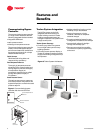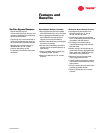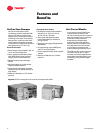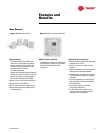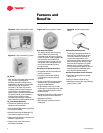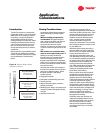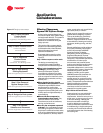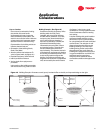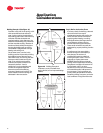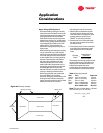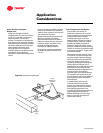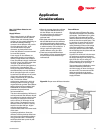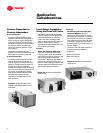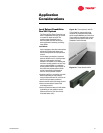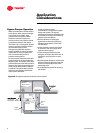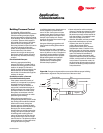
16 VAV-PRC003-EN
Application
Considerations
Figure 19.
Building Example 2
illustrates a poorly insulated store
design (above) and an improved design
(below)
Building Example 2
(See Figure 19.)
Consider a strip mall in the spring or fall
with stores that face both east and
west. In the morning, the east side of
the building gets full sun and warms up
while the west side is shaded and
requires heating. In the afternoon, the
east side of the building may need heat
and the west side cooling. Because of
the thermal load variation throughout
the day, this building will not remain
comfortable if designed with a single
heating and cooling unit.
On the other hand, comfort in this
building could be improved by dividing
the building into two thermal zones
(two HVAC units), one serving the east
exposure and the other serving the
west. Even with the two systems,
individual occupant comfort is not
necessarily assured. Interior
partitioning, varying schedules and
number of occupants within the
thermal zone will drive differing
amounts of heating and cooling. The
issues related to comfort zoning are
addressed in the next section.
Step 3. Define the Comfort Zones
A primary criteria for defining a thermal
zone is that it will not require
simultaneous heating and cooling. An
HVAC unit with one fan is limited to
supplying either heating or cooling.
Most applications with larger thermal
zones however will have varying
thermal needs throughout the zone.
These small variations can easily be
addressed by properly defining comfort
zones.
A comfort zone is an area within a
thermal zone that is controlled by a
zone damper. The amount of
conditioned (heated or cooled) air
entering the space varies. This is in
response to a space thermostat.
ASHRAE Standard 55 recommends
limiting indoor temperature variations.
Temperature variations of less than 2°F
in 15 minutes or 4°F in an hour.
Deviations from this recommendation
will cause discomfort in 80 percent of
the occupants. Zoning systems can
greatly reduce temperature variations
caused by shifting occupancy and solar
load conditions in large thermal zones.
Jewelry
Store
Coffee
Shop
Electronics
Store
Toy
Store
Clothing
Store
Pharmacy
Outside
Doors
N
Poor Design Elements
• One thermostat for entire space
• One HVAC unit
Jewelry
Store
Coffee
Shop
Electronics
Store
Toy
Store
Clothing
Store
Pharmacy
Outside
Doors
N
Improved Design Elements
• Two thermal zones
• Two HVAC units



